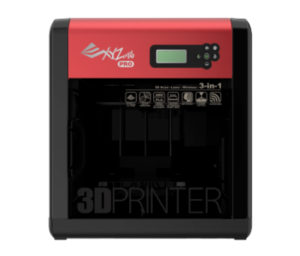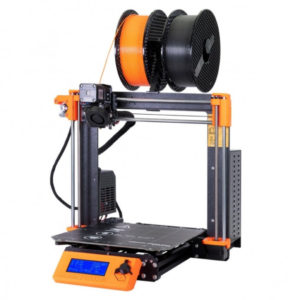3D PRINTING HAS become fairly common and continues to become more so every year. Companies are using this technique to manufacture houses, parts for jets and rockets, firearms and even biological parts like ears. Who couldn’t use a Star Trek replicator in their shop? The question for signmakers, though, is what can I use it for — and how?
Numerous technologies are designed to create 3D objects. In most cases, the technology will relate to the material you plan to use for the final piece. For example, printers that manufacture metal parts use a different technology than printers for plastics or resins. The majority of printers use drop-on-demand technology, which means, essentially, that inkjet printers deposit melted plastics instead of liquid ink. A carriage that works on an XY axis layers rows of dots. To create depth, the surface (table) where the part is being printed lowers to allow for the Z depth.
So right off the bat you can see two factors you need to consider when choosing a printer. The dot size of the head will determine how fine and detailed a part can be. How large you can make an object will be determined by the dimensions of the table, as well as how much the table can be lowered. A machine that can create a cubic foot is considered pretty large for a desktop machine. Also, remember that you can piece parts together to create a bigger finished project.
Now you need to determine what materials you want to use with the machine. If you’re looking to print dimensional decorations or small 3D signs, then you can probably get away with using polylactic acid (or polylactide) — PLA for short. Though it may be the easiest material to work with, it’s brittle and will deform at temperatures around 140° F or higher. Many of the low-cost printers only work with PLA so be aware.
Acrylonitrile Butadiene Styrene (ABS) is the next most commonly used material. It can withstand higher heat and other stresses PLA can’t stand up to. The downside is that it gives off a noxious odor when heated to its melting point. If you want to use ABS, make sure the material is supported by your printer and place the printer in a well-vented area.
If you need really durable prints, look for a printer that can use PETG, or glycolized polyester. This plastic is flexible and can be used for functional parts. A myriad of other specialty filaments including nylon, carbon fibre, wood-fill and even metal are available as well. Note that some of these materials can wear out a print nozzle due to abrasion. As always, make sure the printer is rated for the material that you want to use.
The last gotchas in 3D printing have to do with the creation of the input files. Most printers take 3D files such as .stl. These can be created in virtually all 3D modeling packages and many have modules to ensure the finished art is printable. Unfortunately, these are not straightforward packages. If you don’t have in-house expertise, you can find numerous free and paid models on the internet. Thingiverse.com hosted by MakerBot is probably the largest source. The other option is to purchase a 3D scanner that can create the appropriate files for printing. This can cost around $1,000 and up for a good one.

One of the best ways to add precise dimensionality to any sign is to have it 3D printed.
So, 3D printing is a versatile technology that can add a lot of functionality to your sign shop. Full signs, doodads and functional parts can be printed at will. Very good, flexible printers can be had starting at around $2,000 and run up to six figures for industrial products. Explore some of the options and websites to see if this will fit into your shop.
PHOTO GALLERY (6 IMAGES)


 Tip Sheet4 days ago
Tip Sheet4 days ago
 Business Management2 weeks ago
Business Management2 weeks ago
 Real Deal5 days ago
Real Deal5 days ago
 Women in Signs2 weeks ago
Women in Signs2 weeks ago
 Benchmarks1 day ago
Benchmarks1 day ago
 Editor's Note1 week ago
Editor's Note1 week ago
 Women in Signs5 days ago
Women in Signs5 days ago
 Line Time2 weeks ago
Line Time2 weeks ago



















